| |
|
|
| |
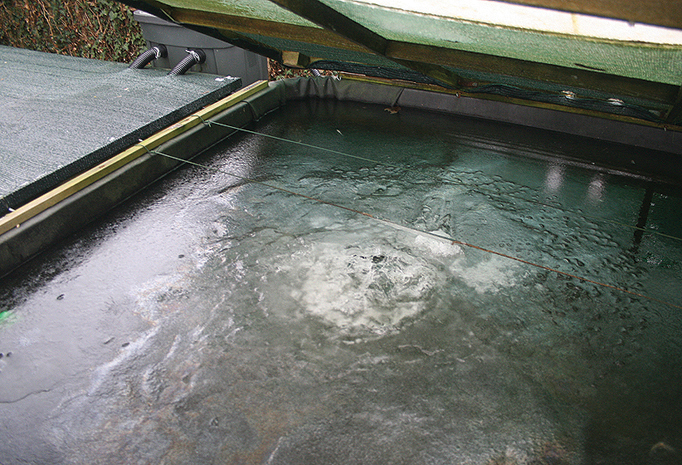 |
|
| |
The harshest winter for goodness knows how long gave us plenty to worry about as temperatures dropped and stayed at near -7C for weeks on end. The filter pipes and header tanks froze solid and the whole system had to be shut down. The ice in the tanks even covered the surface where the aeration system would normally have saved the day. Every morning we’d cut a hole in the ice with a small hand saw only for it to freeze over within hours. Eventually, with ice almost five inches thick, we had to just leave it and hope for the best. All in all, we only lost a few dozen fish, showing that even at 9 months of age our little roach possess amazing strength and resilience.
|
|
| |
 |
|
| |
|
|
| |
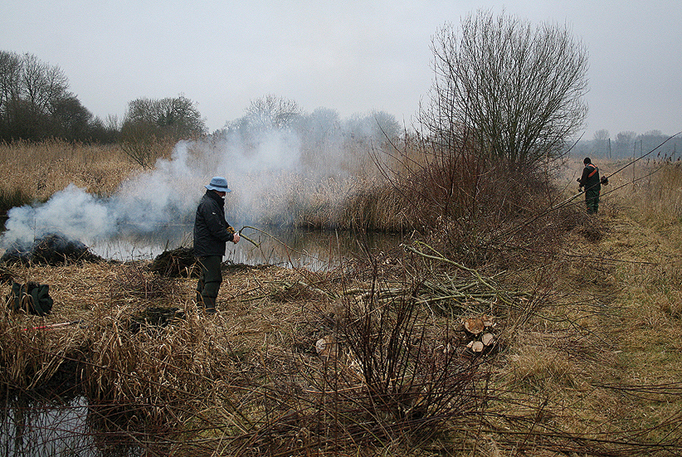 |
|
| |
Throughout the winter work continued on three more of the Longford stews. These had to be cleared and covered with anti-bird netting ready to take our one year olds in March 2010. This would allow the tanks to be cleaned and disinfected ready for the next batch of spawn which hopefully would be collected in April or May. The original plan was to clear all six, but this was not possible so the fish were distributed between the three. We were happy that these would be big enough to handle the number of fish we had.
|
|
| |
 |
|
| |
|
|
| |
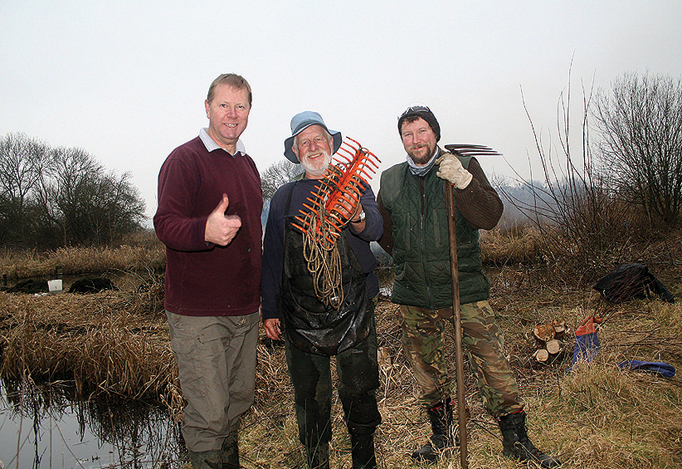 |
|
| |
The three ruffians responsible for the hard graft. From left to right, our Trevor Harrop, Hugh Miles and Pete Orchard. Numb fingers and toes, runny noses – they complained of the lot, but the work got done all the same.
|
|
| |
 |
|
| |
|
|
| |
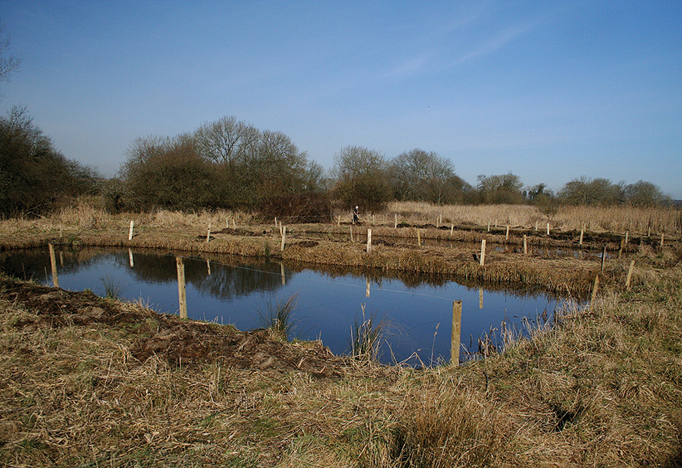 |
|
| |
Almost complete, with posts in, wires across and ready to have the net over the top. This picture of the three stews gives a good perspective of the scale of the set up at Longford. The little dot in the middle of the shot is Hugh Miles.
|
|
| |
 |
|
| |
|
|
| |
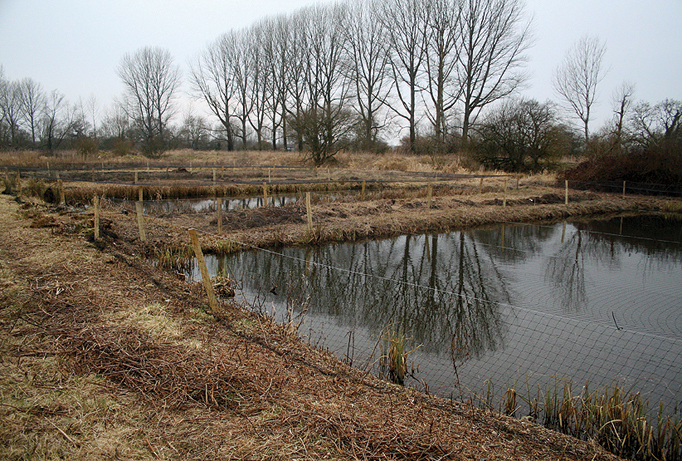 |
|
| |
The three stews cleared, netted and ready to take the next batch of one year olds. Work will be carried out through the winter of 2010/11 on the remaining three. We have just been given six more stews at Bickton. Though smaller, they require the same, if not more, clearance and repair work. They, too, will have to be netted to prevent the local heronry becoming the main beneficiary of our efforts. Goodness knows where we are going to find the funds to pay for all this. Let’s hope the supporters attending the annual fundraising doo step up to the mark.
|
|
| |
 |
|
| |
|
|
| |
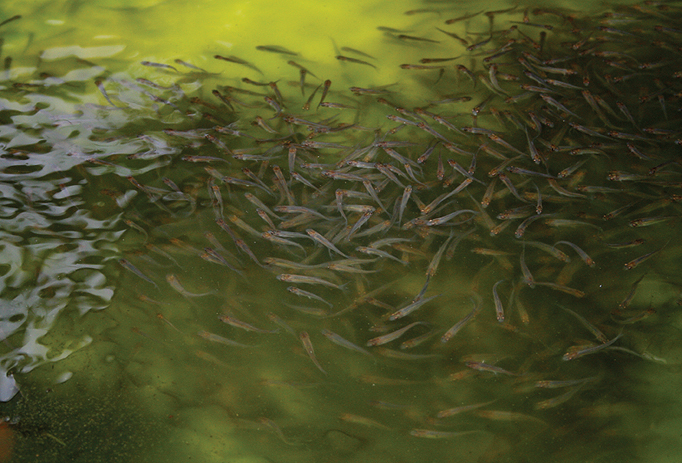 |
|
| |
In March 2010, the tanks were drained down ready for the one year old roach to be moved to the stews where they would spend the next two years prior to being released into the Avon. It’s only when we do this that we really appreciate the level of success we have achieved. Seeing this number of happy, healthy little one year old Avon roach, all courtesy of our hard work and tireless effort, fills us with a warm glow of satisfaction and a belief that we really can make a difference; despite the spiteful, green-eyed, dribbling, knuckle-dragging minority who insist we are only going to be feeding the pike and cormorants... Wake up!
|
|
| |
 |
|
| |
|
|
| |
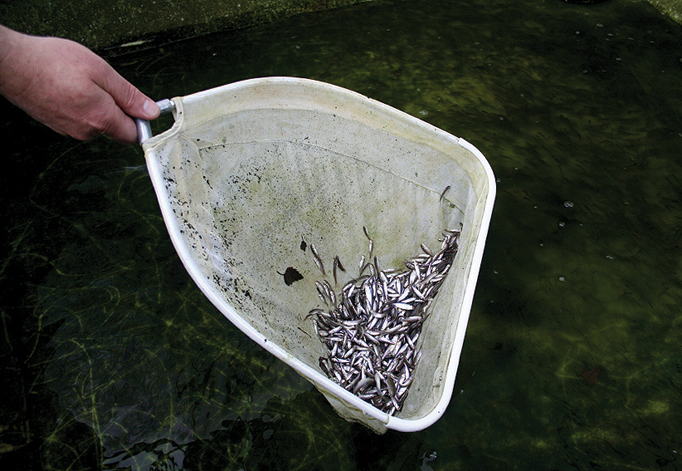 |
|
| |
The fish are unceremoniously scooped up and transferred to heavy duty polythene bags, supplied by the Environment Agency, which are placed in dustbins with aeration systems for transportation. So, lots of bags, lots of bins.
|
|
| |
 |
|
| |
|
|
| |
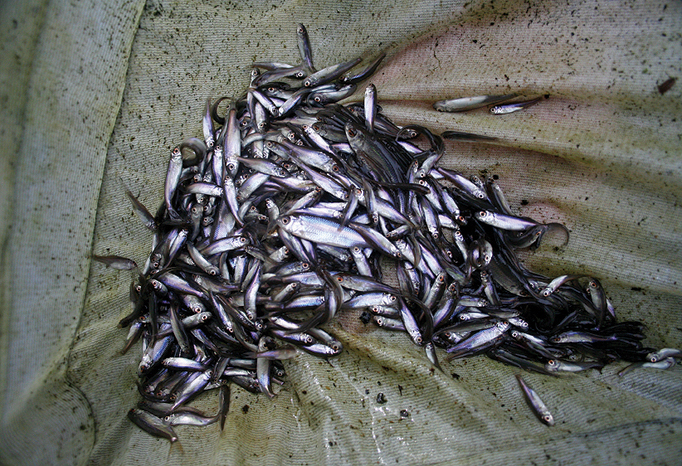 |
|
| |
What a sight; thousands of perfect little Avon Roach. The size difference of fish from the same spawning is amazing. This can be seen clearly in this picture. If you are looking at the big ‘un, dead centre, slide your gaze up and right slightly to the future three pounder.
|
|
| |
 |
|
| |
|
|
| |
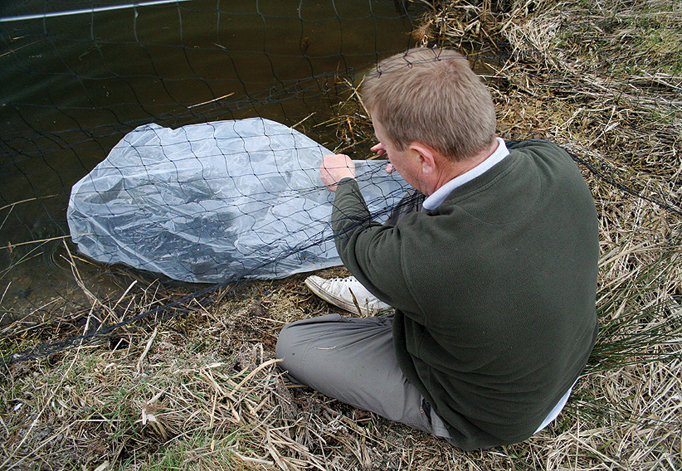 |
|
| |
The satisfying moment the one year olds are introduced into the protected environment of the stew. The fat, ugly bloke holding the bag is our Trev.
|
|
| |
 |
|
| |
|
|
| |
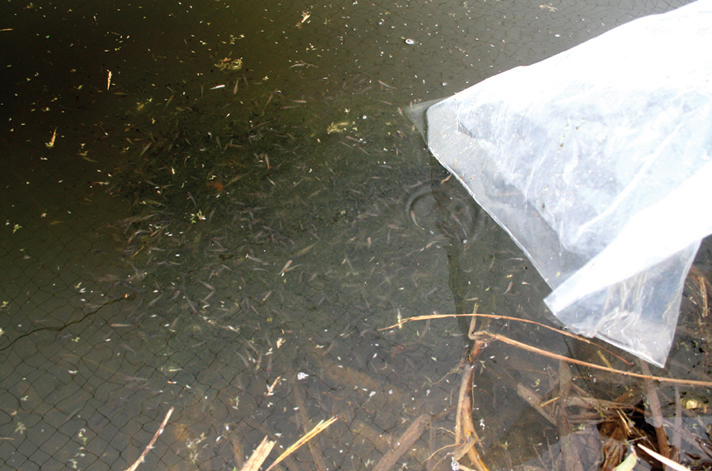 |
|
| |
And away they go. Although there will be abundant food in the way of insects, blood worms, choronomids and a plethora of other critters for our roach to eat in the stews, they will, nonetheless, continue to be fed a supplement of the crumble they have been raised on so far. Unfortunately, the smaller roach will have to have their wits about them, as when we cleared the weed from the stews there were resident insects easily big enough to take some of the smaller guys. There were dragon fly nymphs the size of pianos.
|
|
| |
 |
|
| |
|
|
| |
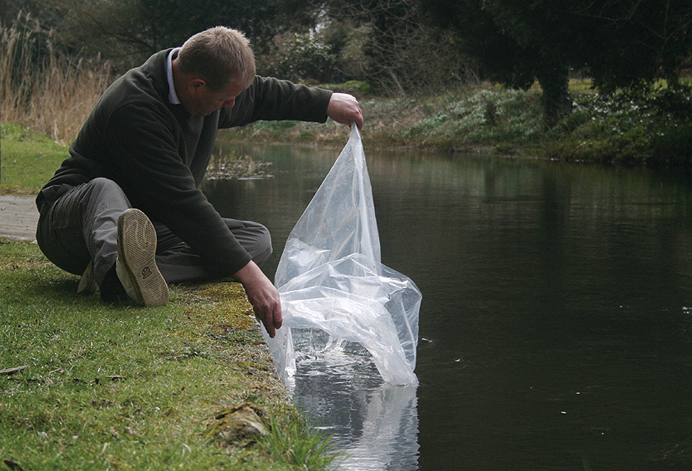 |
|
| |
In a slight modification to the original plan, we have decided to cover our options and spread the risk a little further by releasing some of our one year olds back into the wild, instead of holding them for the full three years. We decided that the habitat from where we collected spawn is clearly suitable for roach, so we returned more than a thousand one year olds, possibly raised from the spawn we’d collected from same spot a year earlier. It was a real freeze-frame, heart-stopping and breathless moment. The sense of satisfaction and joy is indescribable. Depending on numbers raised and environmental considerations, this is something we will be doing year on year from now.
|
|
| |
 |
|
| |
|
|
| |
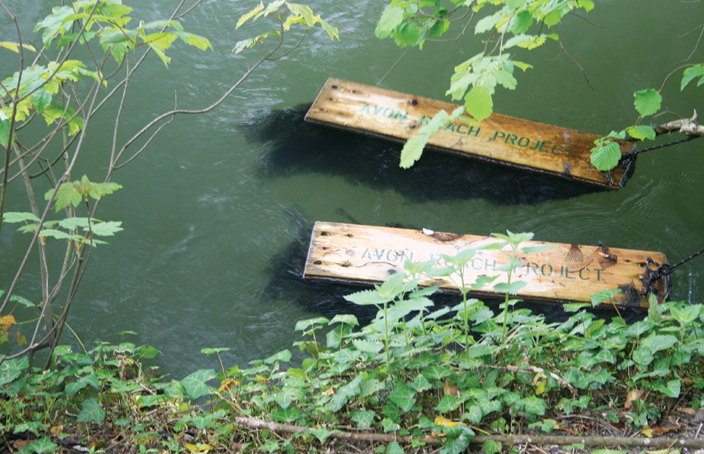 |
|
| |
With last years roach safely relocated and all the tanks cleaned and made ready for the next lot, the spawning boards are placed in our chosen locations in readiness for the rising temperature and lengthening days to trigger spawning. We visit each site and clean the boards every few days, as at this time of year (April) there can be an abundance of silt and muck in the water column as the water warms, which can clog the netting.
|
|
| |
 |
|
| |
|
|
| |
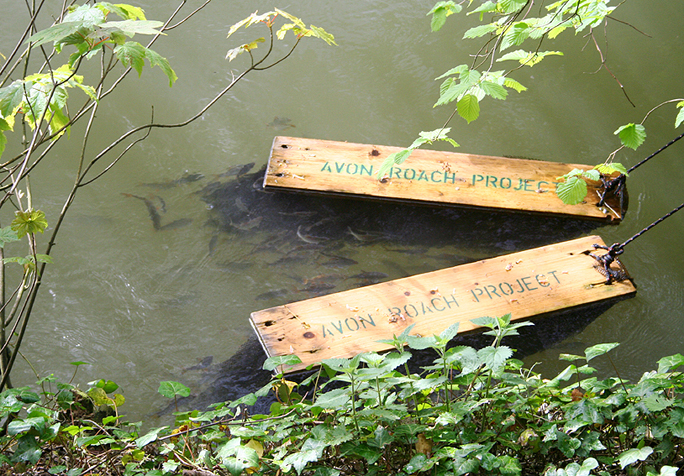 |
|
| |
Within a week or two the roach began to gather at the spawning boards. And, as you can see, they seem to want nothing else. The attraction of our boards to the roach we feel may never truly be fathomed... Like a kebab shop to a carp angler.
|
|
| |
 |
|
| |
|
|
| |
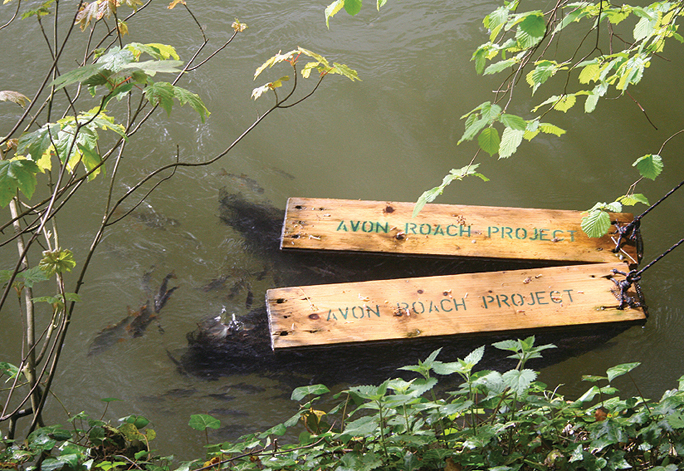 |
|
| |
Spawning begins. With a lot of chasing and sporadic fluttering as the males induce the females to release their eggs by rubbing their tubercle covered flanks against her body. We suspect that the texture of our netting may also do the same, and could be one of the attractors to the fish, as well as its density.
|
|
| |
 |
|
| |
|
|
| |
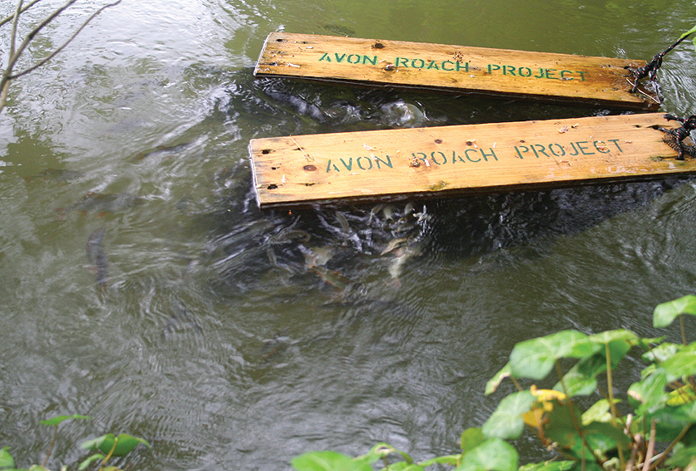 |
|
| |
Within a short time the roach are writhing and splashing all over our boards. They look to have totally lost all their natural caution and are completely preoccupied with procreation. If you are wondering why there is a need for a Roach Project with this amount of roach spawning in one place, then it is worth pointing out that this is the only place we have found with this number of roach present. And this lucky little group exist in a lightly managed and protected roach friendly stream. We are very hopeful that with the same conservation and environmental considerations, habitat restoration and management, roach can once again abound throughout the river. A five minute film can be seen of this spawning on our ‘Film Footage’ section on this site. We watched for hours though, as you can imagine.
|
|
| |
 |
|
| |
|
|
| |
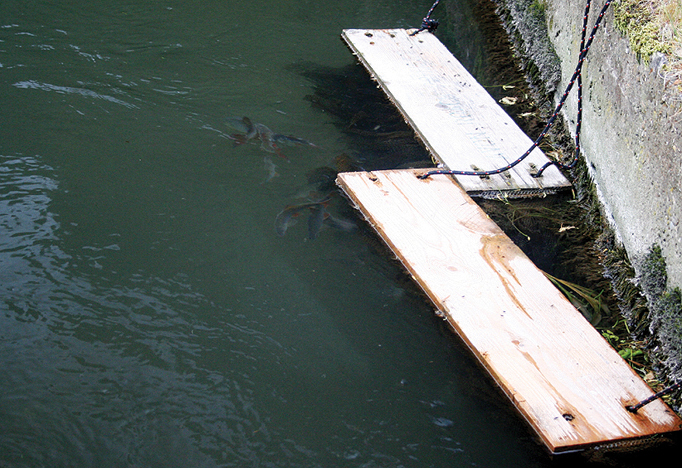 |
|
| |
Interestingly, and indeed amazingly, in all locations, spawning was triggered on exactly the same day, even though the water temperature was a degree or more different and the boards were as much as fifteen miles apart. Mother Nature never fails to take the breath away, be it for good or bad. In this spot the numbers of roach were far fewer and a good reminder of the need for us to succeed.
|
|
| |
 |
|
| |
|
|
| |
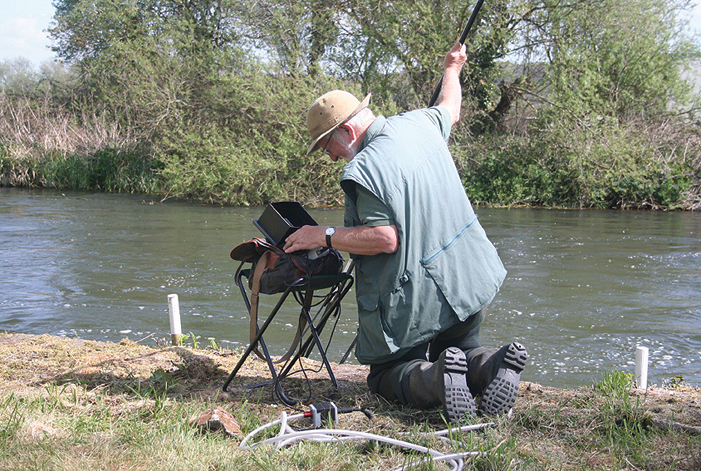 |
|
| |
Having finished his series ‘Catching the Impossible,’ Hugh Miles had the time to come along and film some underwater footage of the roach spawning. This was quite an experience in itself; watching the roach, right in front of the lens, investigating our spawning boards, and seeing it all from the roach’s perspective. Amazing stuff.
|
|
| |
 |
|
| |
|
|
| |
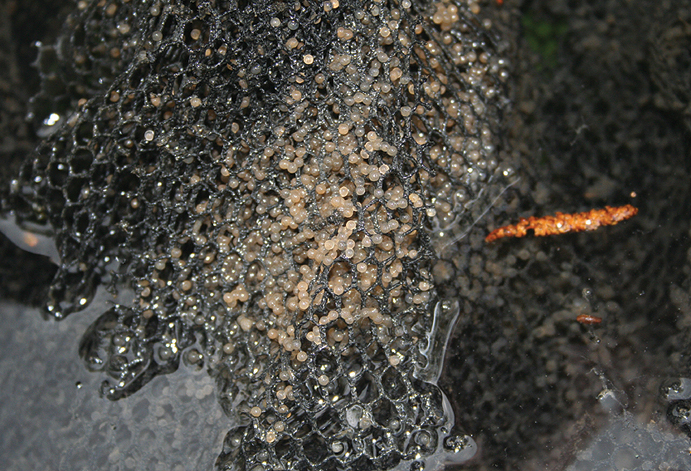 |
|
| |
No words needed here to describe just how attractive the roach find our boards. Once again, as last year, we remove the boards mid-spawning and replace them with fresh for the roach to continue spawning on. These are left to hatch where they are.
|
|
| |
 |
|
| |
|
|
| |
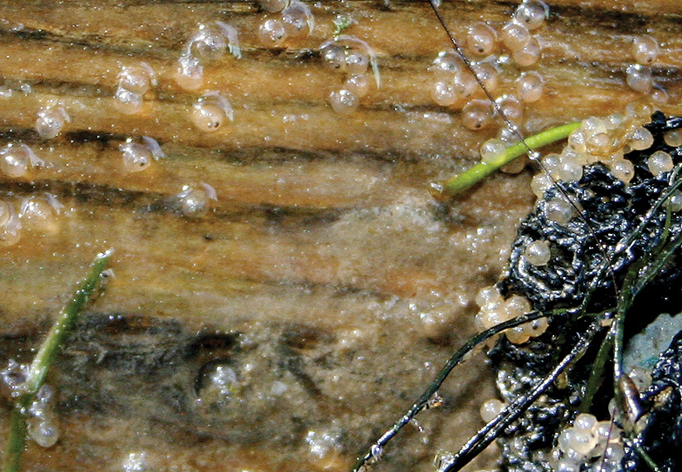 |
|
| |
Aside from the relentless hard work and worry of it all, we regard ourselves as very privileged to be able to see the little roach developing in the eggs. From the first sign of life, being the little black dots – roach eyes – to seeing them wriggling and writhing just prior to emerging. And we do our best to capture all the stages with the camera. Perhaps only nerds like us are actually interested in this kind of detail. Still, we’ve got you looking at it as well now.
|
|
| |
 |
|
| |
|
|
| |
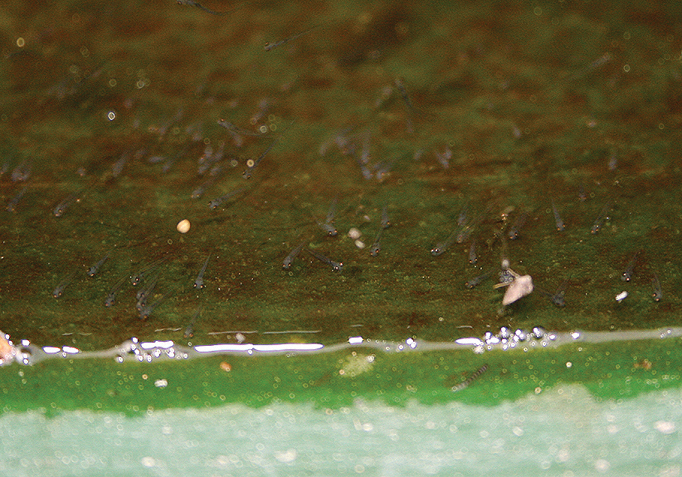 |
|
| |
As mentioned earlier in this site, the roach, immediately after hatching, spend the first period of their lives stuck to the nearest static object by an adhesive gland on their head. In this picture, just hours old, the roach can be seen stuck to the side of the tank. They are no bigger than eyelashes at this age.
|
|
| |
 |
|
| |
|
|
| |
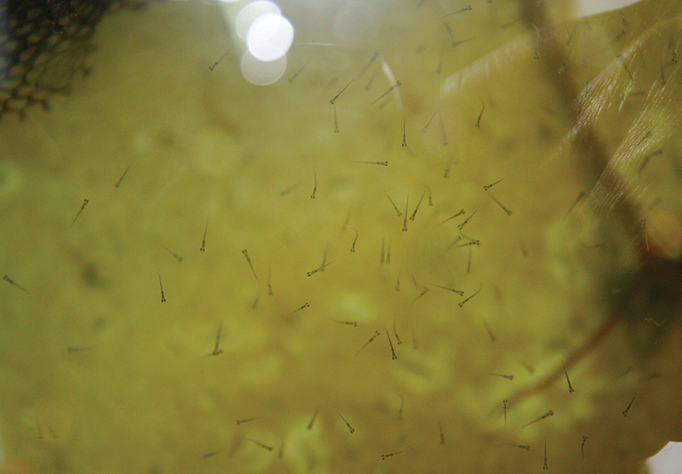 |
|
| |
Hatching usually takes ten to twelve days, but this year there was a sudden drop in temperature and a cold spell for more than a week, which set us worrying. Eventually though, the warming water roused them and soon the tanks were full of tiny little roach.
|
|
| |
 |
|
| |
|
|
| |
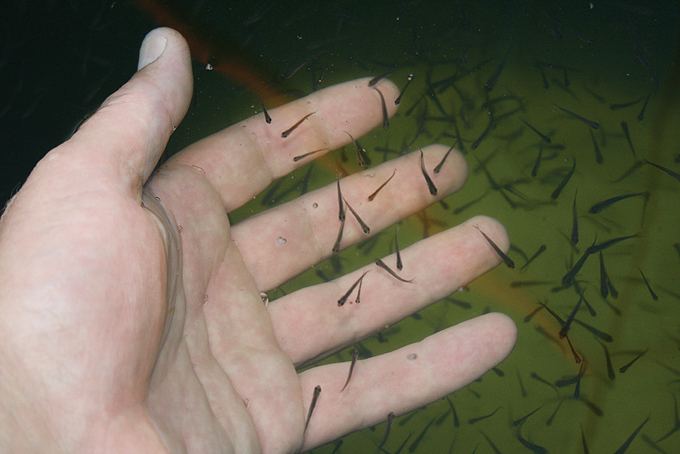 |
|
| |
At about eight weeks the roach are getting about nicely and enjoying a twice daily helping of brine shrimps. Incidentally, Trevor obligingly had a brand new conservatory put up just in time for its first, and primary, use as our annual Brine Shrimp hatchery. The above picture shows a little self indulgence, but what the heck, wouldn’t you?
|
|
| |
 |
|
| |
|
|
| |
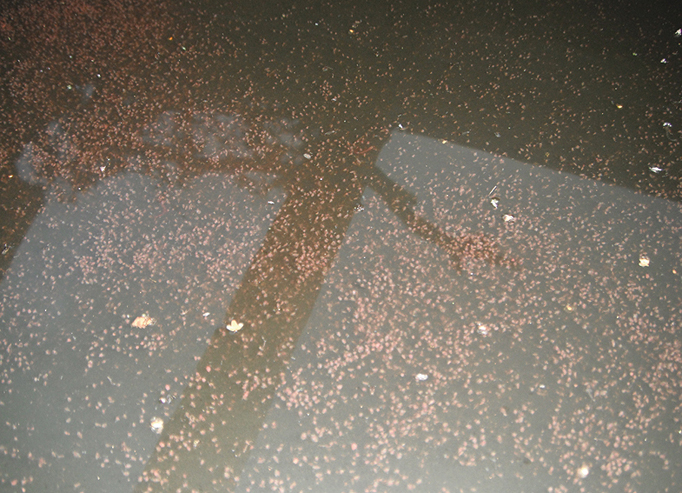 |
|
| |
We’ve mentioned before that we try to give the little roach as much live food as we can cultivate, but ensuring a continuous supply of daphnia through the summer was harder than raising the roach themselves. Well, it seems that this year we have cracked it. Just the right amount of pooh, sunshine and feeding them the algal laden water we end up with when cleaning the filters has done the trick. We have had an almost continuous bloom which we have ensured the babies have missed none of.
|
|
| |
 |
|
| |
|
|
| |
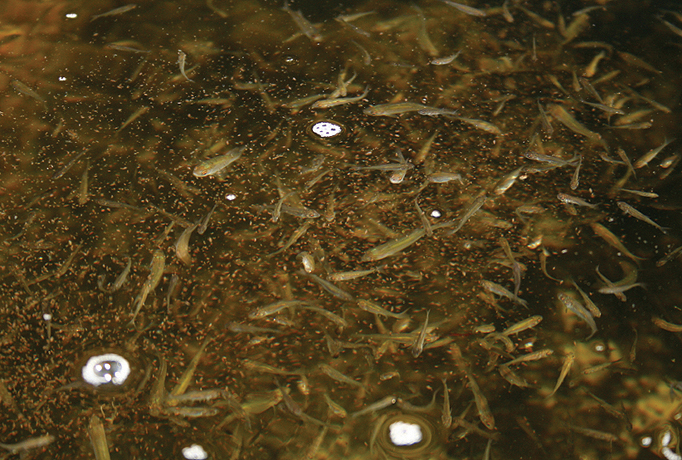 |
|
| |
No words can describe the feeling of wellbeing we get at seeing our three month old Avon roach demolishing a helping of home-grown daphnia. Interestingly, well interesting to us anyway, we have discovered that our filter tanks are full of daphnia and other critters, which will be supplying the fish with regular live food, especially when we shut off and restart the system when cleaning the filter mats. We felt a picture of this on our web site was taking the sharing of our obsession a little too far though.
|
|
| |
 |
|
| |
|
|
| |
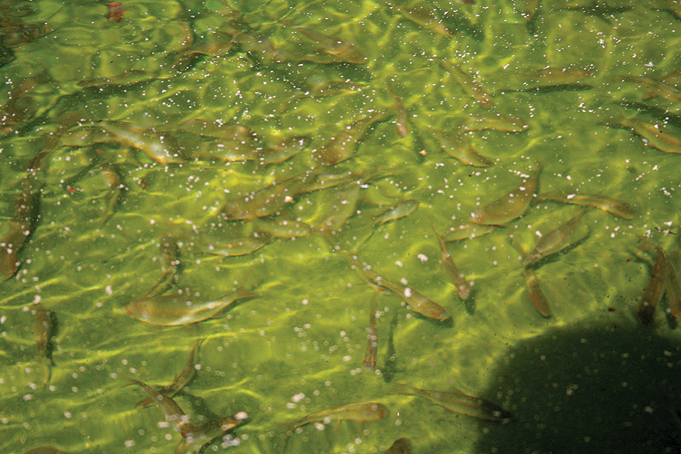 |
|
| |
The toddlers we have kept back to grow on in one of the middle tanks, now two years and three months, are doing well. Four and a half inches long, 15.4 grams, red finned, broad flanked and enjoying the occasional treat of red maggots, courtesy of Richard at Ringwood Tackle.
|
|
| |
 |
|
| |
|
|
| |
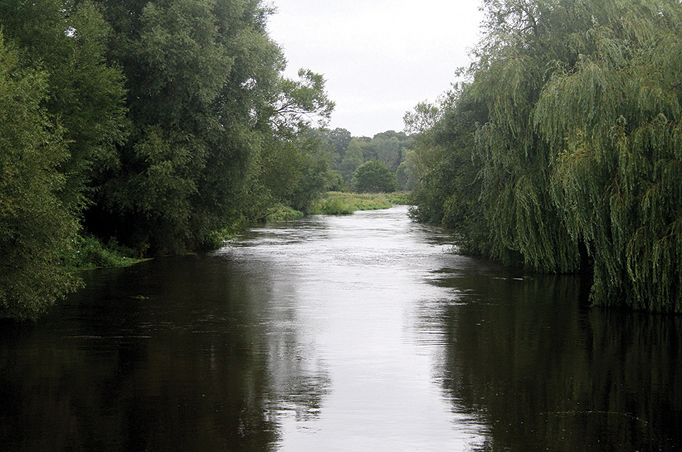 |
|
| |
And this is what it’s all about. The Hampshire Avon. Unarguably one of Mother Nature’s most stunning creations. Once vibrant with sparkling roach and deserving of every drop of help we can offer.
|
|
| |
 |
|
| |
|
|
| |
 |
|
| |
|
|

